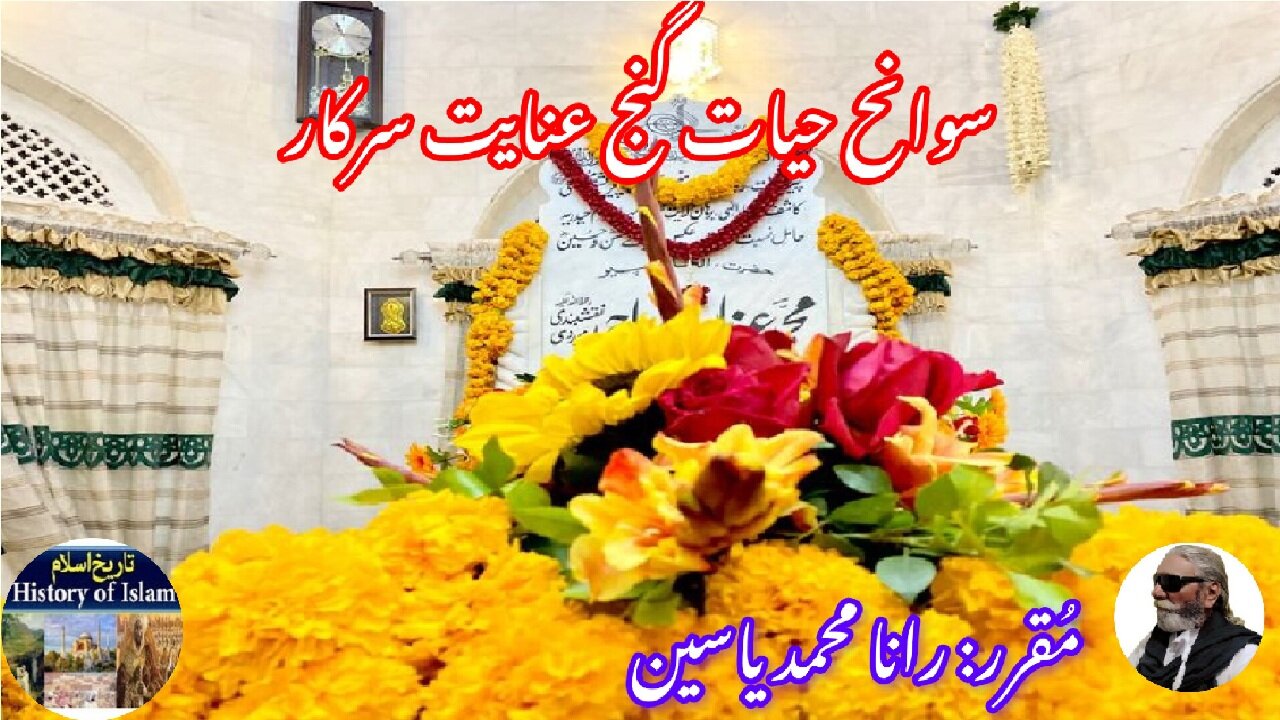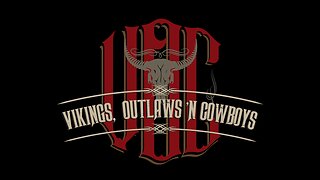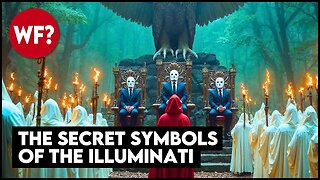Premium Only Content

Biography of Ganj e Inayat Sarkar and his shrine | گنج عنایت سرکار کی سوانح حیات، اور ان کا مزار
@islamichistory813 #islamichistory813 #GanjeInayatSarkar #InayatSarkarbiography #Sufishrines #spiritualfiguresinhistory #IndianSufism #lifeofInayatSarkar #devotionalpractices #Sufiteachings #historicalshrinesinpakitsan #mysticalleaders
Biography of Ganj e Inayat Sarkar, and his shrine.
Asslamoalaikum sisters brothers friends and elders, we are describing about Biography of Ganj e Inayat Sarkar, and his shrine.
Shah Inayatullah popularly known as Sufi Shah Inayat Shaheed, Shah Shaheed or Shah Inayat of Jhok, was a 17th-century Sindhi Sufi saint and revolutionary from Jhok. He was the first socialist and agricultural reformist of Sindh.
He was executed on the order of Mughal Emperor Farrukhsiyar in the early eighteenth century. Sufi Inayat was accused of leading a small army of peasants (Harees) to challenge the domination of Farrukhsiyar, local feudal landlords, and Mullahs. His mantra, “Jo Kherray so Khaey”, means, "The one who plows has the foremost right on the yield." His popularity forced the feudal landlords to contact Farrukhsiyar, who ordered the ruler of northern Sindh Mian Yar Muhammad Kalhoro to uproot Inayat and his companions. A prolonged siege of Jhok resulted in an offer of negotiations from the Kalhora commander. Sufi Inayat accepted the offer to avoid further bloodshed, but was instead arrested and later executed in Thatto.
Shah Inayat was born in 1655/56 A.D to a Sindhi Langah family in Miranpur, Sindh near Jhok where Thatta-Tando Mohammad Khan-Hyderabad road stands in modern times. His father Makhdum Fazlullah provided his early education. He travelled the subcontinent to find a spiritual guide (murshid). He arrived in Burhanpur and became initiated into the Qadiriyya order. He travelled to Bijapur and from there to Delhi. In Bijapur, he was a disciple of Shah Abdul Malik ibn Shah Ubaidullah Jilani Qadiri. When his learning was complete, he took leave from his murshid. Before his departure, Shah Abdul Malik placed four things before his disciple: a tasbeeh, a prayer mat, a karaa, and a sword. Shah Inayat chose the sword (a symbol of martyrdom), to which his murshid asked: 'O fakir what price will you pay for this gift' He replied: "The price is my head."
Once back in Miranpur, Shah Inayat spent his days in meditation and prayer. He had inherited a vast tract of land from his ancestors near his hometown. His message was one of love, tolerance, and equality. Peasants left their respective lands to join his commune to work for Shah Inayat as he had organized collective farming on his own lands. He had raised the slogan, "One who tills the land should eat [the crop]".
He established a monastery (khangah) at Miranpur and distributed his land among the landless tillers (harees). He expressed opposition to the landlords (zamindar) as well as orthodox theologians.[9] He attracted many followers among the peasantry, and organized them against the rulers, landlords and religious scholars, urging them not to pay agriculture tax to the rulers or give a share of their produce to the landlords. The landlords and orthodox mullahs then aligned against him and complained to Azam Khan, governor of Thatta Sarkar that Shah Inayat was trying to overthrow the government.
Shah Inayat's rising influence among his followers in the area of lower Sindh (Thatta Sarkar) caused much discontent in Yar Muhammad Kalhoro, the feudal lord. The latter enjoyed political sway over Bakhar Sarkar (Northern Sindh) and Sehwan Sarkar (Central Sindh) and thus wanted to control over Thatta Sarkar which was still under the rule of Mughal Nawabs. Kalhoro, the first ruler of Kalhora dynasty, strove to consolidate his power across Sindh, but found the social movement of Sufi Shah Inayat a hurdle in realizing his ambition. Thus he, along with other influential landlords, and Pirs of Dargah succeeded in persuading the Delhi government to act against Shah Inayat and his followers for their rebellion against the Mughal Empire. A battle was launched on Farrukhsiyar's order with the combined forces of Kalhora Chief and the Mughal army of governor of Thatta.
The Battle of Jhok was a clash between the Mughal forces along with their local rulers and a band of Sufis who chose to revolt against the feudal and imperial order of the day. A siege was laid to the town of Jhok for about four months, but Shah Inayat's followers gave a stiff resistance. Shah Inayat was preparing to attack the invaders on 1 January 1718 AD, when the Kalhora chief sent Shahdad Khan Talpur with the Quran to invite Shah Inayat for peace talks. However, when Shah Inayat met Yar Muhammad Kalhoro for talks, he was arrested, brought to Thatta and presented to the Mughal governor.
Shah Inayat's Lineage is traced through Fazlullah to Sadu Langah whose family was quite influential in Multan. Sadu langah's ancestors had migrated from Baghdadand settled in Uch near Multan where they became attached to Suhrawardi saints of this place.Makhdoom Fazlullah Langah later settled at Pargana Bathoro on being granted land by the Mughal governor of those times.
Shah Inayat was born in 1655 at Jhok in Bathoro,east of Hyderabad.It was also called Miranpur after Miran Shah Mahdi. Shah Inayat spent entire period of his youth in town of Jhok. He had his education in Persian and Arabic at Miranpur and was well conversant with popular folk-songs and classical poetry in Sindhi.
He wandered around in search of a mystical leader until he met Shah Abdul Malik ibn Shah Ubaidullah Jilani Qadiri (d. 1699) in Bijapur. After he had apparently transgressed the stage of fana fi'sh Shykh, the complete identification with mystical leader, and had reached the highest degree of mystical leadership himself, Shah Abdul Malik sent him to Delhi for learning outward sciences at the hand of Shah Ghulam Muhammad; then he returned Sindh. His teacher, deeply inspired by his spiritual achievements, followed him and settled too in Thatta. Since Shah Inayat had reached highest degree of annihilation and was free from tribulation of outward world, the orthodox theologians of Thatta and 'Scholars of outward knowledge' disapproved him declaring him heretic. The only theologian in Thatta who accepted Shah inayat's claims enthusiastically was Makhdoom Muhammad Moeen Thattvi (d.1748). Shah Inayat considered it wiser to leave hostile atmosphere of Thatta with a group of disciples and returned to his home place: Jhok, literally, a place where camels kneels down or where a large number of people settle down.
Once back in Miranpur, Shah Inayat spent his days in meditation and prayers. His message was one of love, tolerance and equality.He established a Khangah a monstary at Miranpur and distributed his land among the landless tillers(Harees).A Sufi in action,he was opposed to Zamindar(Landlords) on the one hand and to the orthodox theologian on the other.Thus Countless people came under his spiritual light. Soon the population of Miranpur increased many folds.His influence with the people around him caused jealousy among the landlord and orthodox Mullah who conspired against him by complaining to Azam Khan,governor of Thatta Sarkar,that shah Inayat was trying to overthrow the government.
Sufi Shah Inayat's rising influence among his followers in the area of lower Sindh (Thatta Sarkar) caused much discontent in the heart of Mian Yar Muhammad Kalhoro who enjoyed political sway over Bakhar Sarkar(Northern Sindh) and Sehwan Sarkar (Central Sindh) and thus wanted to control over Thatta Sarkar which was still under the direct rule of Mughal Nawabs.
Mian Yar Muhammad Kalhoro's drive to consolidate his power on whole of Sindh, found this 'Social Movement of Sufi Shah Inayat' as main hurdle in realizing his ambition. Thus,he in connivance with other influential landlords of the area,and Pirs of Dargah succeeded in persuading the Delhi government to act against Shah Inayat and his band of peasant followers for rebellion against Mughal Empire.Thus a battle was launched on the order of Mughal emperor Farrukhsiyar by the combined forces of Kalhora Chief and Mughal army of governor of Thatta.
A siege was laid to the town of Jhok for about four months but the follower of Shah Inayat gave stiff resistance. Finally,Shah Inayat was preparing to attack the invaders on 1 January 1718 AD when Kalhora chief sent Shahdad Khan Talpur with the Holy Quran to invite Shah Inayat for peace talks. However, when Shah Inayat met the Kalhora Chief, Yar Muhammad Kalhoro, for talks, he was arrested, brought to Thatta and presented to Mughal governor.
Shahadat of Sufi Shah Inayat Shah Inayat was questioned and beheaded a few days later on 7 January 1718.
During his trial Shah Inayat appeared to long for death and therefore is known as Hallaj of Sindh and is venerated as crowned head of Sufis. His last words to his executioner was in the verses: "You have released me from the chains of existence, May Allah bless you now and hereafter."
The slain head was taken to Delhi in the court of Mughal Emperor Farrukhsiyar. On the way the head recited 700 verses, proving that those martyred in the name of Allah live on till eternity. In Farrukhsiyar's court were present two ardent devotees of Shah Inayat Shaheed. When they saw what had happened, blood rose in their eyes and in an act of fury, both of them blinded Farrukhsiyar with red hot irons. Chaos ensued and One of the disciples was killed while the other managed to escape with the head of his Shaheed Master and made it to Jhok.
A sayyid from Thatta built a shrine, where Shah Shaheed was buried. The other thousands of martyrs were buried in seven mass graves each known as 'Ganj-e-Shaheed' A total of 24,000 followers were martyred during this battle, which is comparable only to the Battle of Karbala. Battle of Jhok was not a fight between two rulers but it was a clash between the mighty Mughal forces along with their local cronies, and a band of brave Sufis who chose to revolt against the corrupt feudals and imperial order of the day.
The Urs or Melo of the 18th century socialist Sufi who laid down his life with a large number of disciples in a battle to protect a commune he had established in the Jhoke area, is entirely different from other Urs celebrations held at different shrines throughout the year.
It is a solemn event that offers little to common devotees by way of entertainment and creates a spiritual ambiance in Jhoke rarely seen at other shrines.The only attraction at Shah Inayat`s Urs is its unending sessions of Sufi singing held here and there on the premises of the vast shrine consecutively for three days and nights.
Shah Inayat`s struggle was aimed at exploring hardships faced by humanity on the whole and addressing people`s problems without any discrimination of caste, creed and religion.He preferred to get killed but refused to surrender to the oppressors.Shah Inayat took up sword against tyrant rulers and feudal lords and his message “Jeko Khere So Khaye” (he who tills has the right to eat) was addressed not only to Sindh but to the entire world
Allah Hafiz
=====================
-
 21:24
21:24
DeVory Darkins
1 day ago $1.28 earnedElon Musk and Tucker Carlson SHATTER Left Wing Media
3.84K24 -
 DVR
DVR
Stephen Gardner
31 minutes ago🔥Breaking: Trump JUST DID the UNEXPECTED | Tucker Carlson WARNS America!
3 -
 1:18:01
1:18:01
Glenn Greenwald
5 hours agoWill Trump's Second Term Promote Economic Populism? Matt Stoller On Cabinet Picks To Fight Corporate Power; Should Liberals Cut Off Pro-Trump Friends & Family? | SYSTEM UPDATE #372
132K120 -
 2:26:30
2:26:30
WeAreChange
6 hours agoTrump To Subdue Deranged Opposition! ARRESTS Planned
109K27 -
 1:19:04
1:19:04
JustPearlyThings
6 hours agoWhy MODERN WOMEN Keep REJECTING The Redpill! | Pearl Daily
87.2K51 -
 LIVE
LIVE
Man in America
8 hours agoBig Pharma EXPOSED: The HIDDEN Cures They Tried to Bury
1,990 watching -
 LIVE
LIVE
VikingsOutlawsAndCowboys
8 hours agoVOC SHOW LIVE - #9
100 watching -
 43:22
43:22
PMG
23 hours ago"Sean Parnell Speaks Out for Tulsi Gabbard and Pete Hegseth; J6 Pardons Needed"
10.6K5 -
 DVR
DVR
Flyover Conservatives
22 hours agoShifting Alliances: Tulsi, Musk, RFK, Rogan… CAN THEY BE TRUSTED? - Roger Stone | FOC Show
21.3K -
 39:01
39:01
The Why Files
8 days agoSymbols of Power: Deciphering the Language of the Secret Elite
108K64